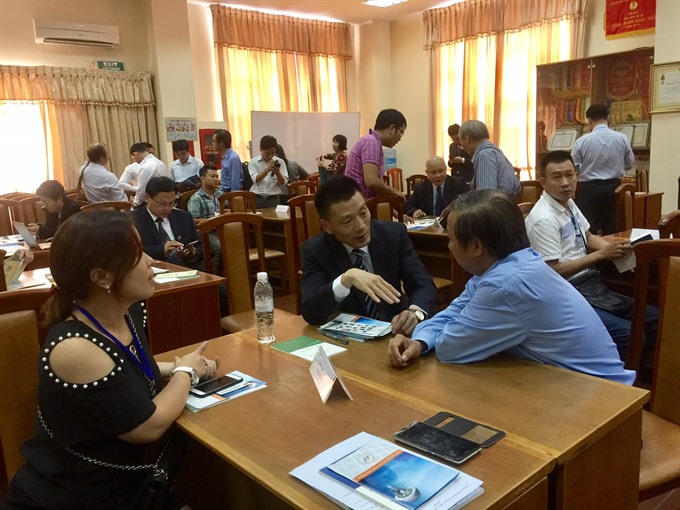 Economy
Economy

Executives from 12 companies and business associations in China’s Shandong Province yesterday met with more than 50 Vietnamese counterparts in HCM City to discuss the possibilities of collaboration.
 |
| Vietnamese and Shandong business executives meet at the Việt Nam-China (Shandong Province) business meeting held in HCM City on June 28. — VNS Photo |
HCM CITY — Executives from 12 companies and business associations in China’s Shandong Province on Wednesday met with more than 50 Vietnamese counterparts in HCM City to discuss the possibilities of collaboration.
The visitors specialise in solar energy, farm produce, gantry cranes, small and light lifting equipment, agricultural machinery, vehicle accessories, building materials, CNC cutting machines, food imports and others.
Speaking at the meeting, Nguyễn Thế Hưng, deputy director of the Việt Nam Chamber of Commerce and Industry’s HCM City chapter, said trade between Việt Nam and China had grown rapidly in the last few years to US$71.6 billion last year, with China’s exports being worth $49.8 billion.
As of last March Chinese companies were the eighth biggest investors in Việt Nam with $11.2 billion in 1,615 projects, he said.
Zhai Luning, vice chairwoman of the China Council for the Promotion of International Trade, Shandong Sub-council, said Shandong was a major economic player, with its economy growing by 7.6 per cent last year to 6.7 trillion yuan (about US$1 trillion) worth, the third largest province in the country.
Việt Nam is among the province’s key trade partners in ASEAN, she said
Their trade was worth 28.4 billion yuan last year ($4.17 billion), an increase of 16.3 per cent over 2015, with Shandong enjoying a surplus.
Its key imports from Việt Nam include electrical and electronic products, garment and textile, foodstuff, synthetic and natural rubber, fresh and dried fruits, seafood, oil and gas, and machinery.
Its main exports are iron, garment and textile, electrical and electronic products, machinery and equipment, vehicles, plywood, metal products, fruits and vegetables, and coal.
Investment by Shandong-based businesses in Việt Nam had increased significantly, especially in the fields of rubber tyres and garment and textile, she said.
The delegation’s executives were from sectors with great potential to do business with Việt Nam, she said.
Hưng said with a population of more than 10 million and accounting for 22 per cent of Việt Nam’s GDP and 30 per cent of its revenues, HCM City is an attractive investment destination, including for Chinese firms.
Wong Chen Wei of Deloitte Vietnam listed the incentives Việt Nam offers investors.
Việt Nam offers incentives in sectors it has prioritised for development -- such as supporting industries, technology, automobile assembly, electronics, footwear, and garment and textile, he said. — VNS




